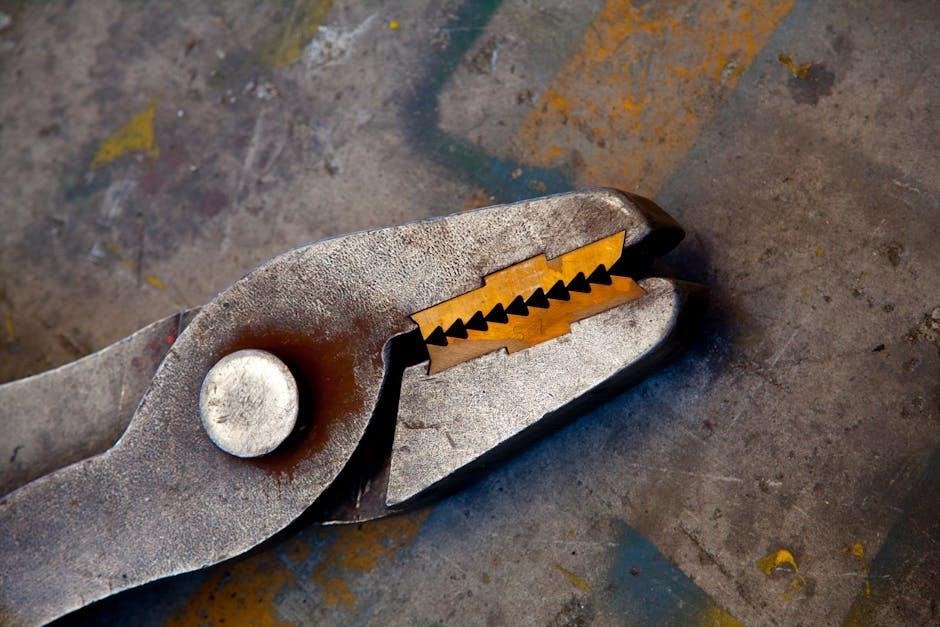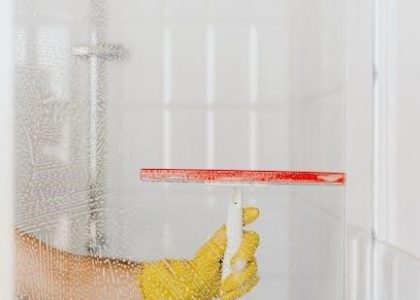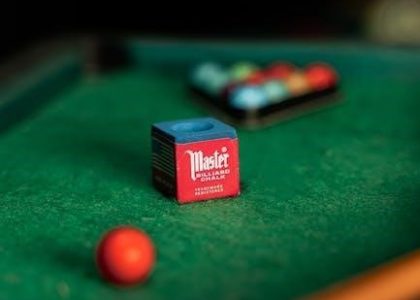The Hunter Node 100 manual provides a comprehensive guide to understanding and operating the battery-operated wireless irrigation controller. Designed for reliability‚ it offers seamless control for lawns‚ gardens‚ and drip systems‚ ensuring efficient water management with advanced features and durability.
Overview of the Hunter Node 100
The Hunter Node 100 is a battery-operated‚ wireless irrigation controller designed for reliable performance in various watering systems. It is ideal for lawns‚ gardens‚ and drip irrigation setups‚ offering precise control with a user-friendly interface. The controller features a waterproof design‚ ensuring durability in outdoor environments‚ and is compatible with DC latching solenoids for efficient valve operation. With a maximum run time of up to 6 hours‚ it provides flexibility for different irrigation needs. The Node 100 also supports manual operation‚ allowing for quick‚ one-time watering without altering programmed schedules. Its compact design and wireless functionality make it easy to install and integrate into existing systems. Whether for professionals or DIY enthusiasts‚ the Hunter Node 100 is a versatile solution for efficient and convenient water management.
Key Features of the Hunter Node 100
The Hunter Node 100 boasts an array of advanced features designed to simplify and enhance irrigation management. It operates on a reliable battery power system‚ eliminating the need for direct wiring and offering excellent portability. The controller is fully waterproof‚ ensuring durability in outdoor conditions. It supports DC latching solenoids‚ enabling precise control over irrigation valves. With a battery life of up to three years‚ it minimizes maintenance requirements. The device also includes a manual override feature‚ allowing for instant irrigation without altering programmed schedules. Its user-friendly interface makes it easy to configure and monitor watering cycles. Additionally‚ the Node 100 is compatible with weather sensors‚ enabling smart watering adjustments based on environmental conditions. These features combine to provide a robust‚ efficient‚ and adaptable irrigation solution for various landscapes and applications.

Benefits of Using the Hunter Node 100
The Hunter Node 100 offers numerous benefits that enhance irrigation efficiency and convenience. Its battery-powered design eliminates the need for wiring‚ reducing installation time and costs. The waterproof controller ensures reliable performance in harsh outdoor environments‚ minimizing the risk of damage. With DC latching solenoid compatibility‚ the system operates energy-efficiently‚ reducing power consumption. The ability to connect a weather sensor allows for smart irrigation adjustments‚ conserving water and optimizing plant health. Long battery life‚ up to three years‚ reduces maintenance needs. The manual override feature provides quick control for unexpected watering requirements. Its intuitive interface simplifies programming‚ making it accessible for users of all skill levels. These benefits combine to deliver a cost-effective‚ durable‚ and user-friendly irrigation solution‚ ideal for residential and commercial applications. By streamlining irrigation management‚ the Node 100 helps save time‚ water‚ and resources.

Hunter Node 100 System Components
The Hunter Node 100 system includes a durable controller‚ solenoid valve‚ power source‚ and mounting hardware‚ designed for efficient irrigation control and adaptability to various landscapes‚ ensuring reliable performance.
Controller Overview
The Hunter Node 100 controller is the central component of the irrigation system‚ designed for durability and ease of use. Its weather-resistant casing ensures reliability in outdoor environments‚ while the intuitive interface simplifies programming and monitoring. The controller features a large LCD screen for clear visibility‚ allowing users to navigate through settings and view real-time data effortlessly. It supports advanced irrigation management‚ enabling custom programs tailored to specific landscape needs. The device also includes smart features like automatic weather adjustments and remote access via Bluetooth and Wi-Fi connectivity. With its robust design and user-friendly functionality‚ the Hunter Node 100 controller streamlines irrigation management‚ making it ideal for both residential and commercial applications. Its compatibility with various sensors and expansion modules further enhances its versatility‚ ensuring efficient water usage and optimal lawn care.

Solenoid and Valve Compatibility
The Hunter Node 100 is designed to work seamlessly with a wide range of solenoids and valves‚ ensuring compatibility and reliable operation. It supports standard 24V AC solenoids‚ making it compatible with most irrigation systems. The controller is also compatible with Hunter’s full line of durable valves‚ including globe‚ angle‚ and needle valves. For optimal performance‚ it is recommended to use genuine Hunter solenoids and valves‚ as they are specifically designed to integrate with the Node 100 system. The system’s design ensures minimal power consumption while maintaining precise control over water flow. Additionally‚ the controller supports two-way and three-way valves‚ offering flexibility for various irrigation setups. Always verify the valve’s voltage and flow rate match the controller’s specifications to ensure proper operation. Improper pairing may lead to poor performance or system damage. For specific compatibility questions‚ consult the manual or contact Hunter support.
Power Sources and Battery Life
The Hunter Node 100 is designed to operate efficiently using a non-proprietary 9V alkaline or lithium battery‚ ensuring reliable performance and easy replacement; The battery compartment is water-resistant‚ protecting the power source from environmental conditions. With typical usage‚ the battery life can last up to 2 to 3 years‚ depending on factors such as wireless communication and weather sensor integration. For optimal performance‚ it is recommended to use high-quality batteries to maintain consistent power supply. The system includes low-battery alerts via the Hunter app‚ ensuring users are notified well in advance of battery replacement. The Node 100 also features smart power management‚ minimizing energy consumption while maintaining full functionality. This ensures extended battery life without compromising system operation; Always turn off the controller before replacing the battery to avoid any data loss or system reset. Proper installation and maintenance of the power source are essential for maximizing the device’s efficiency and longevity.
Mounting Hardware and Accessories
The Hunter Node 100 comes with a comprehensive set of mounting hardware and accessories to ensure secure and flexible installation. The controller includes a durable wall-mounting bracket made of high-quality plastic‚ designed to withstand outdoor conditions. Additional hardware such as screws and clips is provided to accommodate various installation scenarios. For added convenience‚ the Node 100 is compatible with optional accessories like the Hunter Node-Link wall mount and the Node-100-ENC enclosure‚ which offers enhanced protection in harsh environments. The mounting system allows for easy adjustment‚ enabling users to position the controller for optimal signal reception and accessibility. All hardware is designed to be weather-resistant‚ ensuring longevity and reliability. The accessories are simple to install‚ requiring no specialized tools‚ making the setup process straightforward for both professionals and DIY enthusiasts. Proper use of the mounting hardware ensures the system remains stable and functions effectively in all conditions.

Installation Steps for the Hunter Node 100
The Hunter Node 100 installation involves preparing the site‚ mounting the controller‚ connecting the solenoid‚ installing the battery‚ and linking sensors and valves. Follow proper sequence for optimal performance and safety.
Preparing the Site for Installation
Before installing the Hunter Node 100‚ ensure the site is properly prepared. Choose a dry‚ shaded‚ and accessible location for the controller to protect it from direct sunlight and moisture. Clear the area of debris and level the ground if necessary. Verify proximity to the water source and solenoid valves to minimize wiring and tubing requirements. Check for underground utilities to avoid damage during installation. Gather all necessary tools and materials‚ such as screws‚ brackets‚ and wiring connectors. Ensure compliance with local regulations and safety guidelines. Finally‚ inspect the site to confirm it is ready for the next installation steps.
Connecting the Solenoid to the Valve
Connecting the solenoid to the valve is a critical step in the Hunter Node 100 installation. Begin by ensuring the solenoid is compatible with the valve and the system’s voltage requirements. Locate the valve’s solenoid port and remove any protective caps. Attach the solenoid to the port using the provided adapters or connectors‚ ensuring a secure and watertight seal. Next‚ connect the wires from the controller to the solenoid terminals‚ matching the correct polarity (positive and negative). Use waterproof wire connectors to protect the connections from moisture. Tighten all fittings firmly to prevent leaks. Finally‚ test the connection by manually activating the valve through the controller to confirm proper operation. Proper installation ensures reliable performance and prevents potential system failures. Always follow the manufacturer’s guidelines for specific solenoid and valve configurations.
Installing the Battery
Installing the battery in the Hunter Node 100 is a straightforward process that ensures the system’s wireless functionality. Begin by turning off the controller to avoid any electrical interference. Locate the battery compartment‚ usually found on the back or bottom of the controller. Open it by sliding the cover or using a screwdriver‚ depending on the model. Remove any protective packaging from the battery and insert it into the compartment‚ ensuring the positive (+) and negative (-) terminals align correctly. Replace the compartment cover securely. Finally‚ test the system by turning the controller back on and verifying that all functions operate correctly. Always use the recommended battery type to maintain optimal performance. If the battery is not pre-installed‚ refer to the manual for specific instructions tailored to your Hunter Node 100 model. Proper installation ensures reliable operation and extends the system’s lifespan.
Mooting the Controller
Mooting the controller is essential to ensure proper operation of the Hunter Node 100 system. Begin by selecting a suitable location for the controller‚ ensuring it is dry‚ accessible‚ and protected from direct sunlight or water exposure. Use the provided mounting hardware‚ such as screws or brackets‚ to secure the controller to a wall or surface. Align the controller properly to maintain its functionality and aesthetic appeal. Once mounted‚ double-check that all wires and connections are securely attached and organized to prevent damage or interference. Ensure the controller is level and firmly fastened to avoid any movement or vibration. After mounting‚ test the controller by turning it on and verifying that all buttons and displays function correctly. Proper mounting ensures reliable performance and extends the lifespan of the Hunter Node 100 system. Always follow the manufacturer’s guidelines for optimal results. This step is critical for maintaining the system’s efficiency and durability over time.
Connecting a Weather Sensor
Connecting a weather sensor to the Hunter Node 100 enhances the system’s ability to adapt irrigation schedules based on actual weather conditions. Begin by locating the weather sensor‚ typically included with the Hunter Node 100 system. Identify the connector labeled “weather sensor input” on the controller. Before proceeding‚ ensure both the sensor and controller are powered off to prevent any electrical issues. Attach the sensor to the controller using the provided cable or wireless pairing method‚ depending on the model. Once connected‚ power on the system and navigate to the controller’s settings menu. Select the option to configure the weather sensor‚ choosing the appropriate sensor type and adjusting sensitivity settings as needed. Follow on-screen instructions for calibration to ensure accurate data collection. After configuration‚ test the system to confirm the sensor communicates effectively with the controller. This integration optimizes water usage and maintains healthy landscaping by automatically adjusting irrigation based on real-time weather data. Proper setup ensures the sensor functions seamlessly with the Hunter Node 100‚ providing reliable and efficient irrigation management.

Programming the Hunter Node 100
Programming the Hunter Node 100 is designed to be intuitive and efficient‚ offering customizable irrigation schedules tailored to specific needs‚ ensuring optimal water management and flexibility for various landscaping requirements.
Understanding the Programming Interface
The Hunter Node 100 features an intuitive programming interface designed for easy navigation and setup. The interface includes a clear backlit display and a keypad with straightforward buttons for menu navigation. Users can access various programming options by pressing the menu button and using the up/down arrows to scroll through settings. The interface allows for configuring irrigation schedules‚ adjusting watering times‚ and enabling advanced features like rain delay and sensor integration. The display provides visual feedback‚ showing current settings and status messages‚ ensuring users are informed throughout the process. The interface also supports multiple languages‚ enhancing accessibility. With its user-friendly design‚ the Hunter Node 100 makes it simple to customize irrigation programs to meet specific lawn care needs‚ ensuring efficient water usage and healthy plant growth. The menu is logically structured‚ guiding users step-by-step through programming tasks‚ making it accessible even for those new to smart irrigation systems.

Setting Up Manual Mode
Manual mode on the Hunter Node 100 allows for one-time watering without altering the programmed schedule. To activate manual mode‚ press and hold the B button until the display shows “Manual Mode.” Use the up and down arrows to select the desired station or zone. Once selected‚ press the B button to confirm. Next‚ use the +/- buttons to set the desired watering duration in minutes. Press the B button again to start the manual cycle. The controller will display “Man” to indicate manual operation. Watering will begin immediately and stop after the set duration. Manual mode is ideal for quick‚ one-off watering sessions or for testing irrigation zones. Note that manual mode does not override scheduled programs; it simply adds a temporary cycle. Always use the backlit display to monitor the status and ensure the cycle runs as intended. This feature provides flexibility for specific watering needs without disrupting the overall irrigation plan.
Creating Custom Programs
Custom programs on the Hunter Node 100 enable users to tailor irrigation schedules to specific landscape needs. To create a custom program‚ navigate to the programming interface and select “Custom Programs.” Choose the station or zone you wish to program and set the start time using the +/- buttons. Specify the watering duration and frequency (e.g.‚ daily‚ every other day‚ or weekly). You can also add multiple start times for the same zone by pressing the B button to add another cycle. For zones with varying requirements‚ customize settings independently; Once configured‚ press the B button to save the program. Custom programs allow for precise control‚ ensuring each zone receives the right amount of water. This feature is particularly useful for landscapes with diverse plant types or soil conditions. The Hunter Node 100 stores up to four custom programs‚ offering flexibility for complex irrigation needs. Regularly review and adjust programs to maintain optimal watering schedules.
Setting Start Times and Stations
Setting start times and stations on the Hunter Node 100 ensures your irrigation system operates on a precise schedule. To set a start time‚ use the + and ⎯ buttons to adjust the hour and minute values. Once the desired time is set‚ press the B button to confirm. For multiple start times‚ repeat the process and press B to save each additional time. Stations can be selected by pressing the station number buttons (1-4) or by cycling through them using the arrow keys. To enable or disable a station‚ press the A button while the station number is displayed. The controller allows up to four start times per program‚ providing flexibility for different watering needs. Use the arrow keys to navigate between stations and ensure all desired zones are active. Properly setting start times and stations ensures efficient and targeted irrigation‚ maximizing water usage efficiency for your landscape.
Adjusting Advanced Settings
Adjusting advanced settings on the Hunter Node 100 allows for fine-tuning your irrigation system to meet specific needs. The water budget feature enables you to adjust irrigation durations by a percentage‚ increasing or decreasing water usage based on weather conditions. To access this‚ go to the Advanced menu and use the + or ⎻ buttons to set the desired percentage. Additionally‚ you can modify sensor adjustments to account for soil moisture or rain sensor inputs. Press A to toggle between active and inactive modes for connected sensors. The cycle and soak feature can also be customized to optimize water infiltration‚ reducing runoff. Use the arrow keys to select the cycle duration and soak time. Finally‚ the diagnostic tool provides insights into system performance‚ helping identify issues like valve faults or low battery levels. Adjusting these settings ensures your irrigation system operates efficiently and adapts to changing conditions. Proper setup of advanced settings enhances water conservation and system reliability.

Troubleshooting and Maintenance
Troubleshoot common issues like valve malfunctions or sensor errors by checking connections and power sources. Regularly inspect and clean solenoids‚ valves‚ and sensors to ensure optimal performance. Replace worn-out components promptly. Schedule annual maintenance to verify proper system operation and extend longevity. Use diagnostic tools to identify faults early. Always refer to the manual for specific repair guidelines.
Common Issues and Solutions

Identify and resolve common issues with the Hunter Node 100 to ensure seamless operation. One frequent problem is inconsistent valve operation‚ often due to faulty solenoids or poor wire connections. Check the solenoid for dirt or debris and clean it thoroughly. Another issue is low battery life‚ which can be addressed by replacing the battery or ensuring proper charging. If the controller fails to communicate with the sensor‚ verify wireless connectivity and reset the system if necessary. Water hammer or noise in pipes may indicate improper valve installation; ensure valves are mounted correctly. For programming errors‚ restart the controller and re-enter settings. If the weather sensor provides inaccurate data‚ recalibrate it according to the manual. Regularly inspect all components for wear and tear to prevent unexpected malfunctions. Always refer to the troubleshooting guide in the manual for detailed solutions and step-by-step repair instructions.

Regular Maintenance Tips
Performing regular maintenance on the Hunter Node 100 ensures optimal performance and extends its lifespan. Start by cleaning the solenoid and valve regularly to remove dirt and debris‚ which can interfere with operation. Inspect the wiring and connections for signs of wear or corrosion‚ and replace any damaged components promptly. Check the battery level periodically and replace it when necessary to avoid unexpected shutdowns. Additionally‚ ensure the weather sensor is free from obstructions‚ such as dirt or leaves‚ to maintain accurate readings. Flush the irrigation system annually to remove sediment and mineral buildup. Test the system monthly to identify and address any issues early. Update the controller’s firmware whenever new updates are available. Store the controller in a dry‚ cool place during off-seasons to prevent damage. By following these maintenance tips‚ you can ensure reliable operation and maximize the efficiency of your Hunter Node 100 system.





